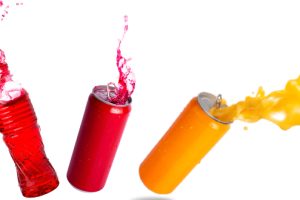The closure of pubs, bars and restaurants meant shoppers had no choice but to drink at home, often attempting to recreate the on-trade experience in their own kitchens. This led to a surge in sales across beer and cider in the convenience sector which, according to David Sheppy, managing director at Sheppy’s Cider, was driven by larger shopping baskets as consumers use the c-stores to do their main shop rather than busier supermarkets.
He adds: “While it has been reported widely that consumers’ alcohol consumption has either increased or dramatically reduced under lockdown, what we have noticed is that getting the pub experience at home has become more important than ever.”
Strong growth
According to Jessica Markowski, convenience sales director at Budweiser Brewing Group, beer sales rose by 29% year on year in the off-trade overall but grew ahead of the market within convenience. “We have seen sustained demand so far this year,” she says, “with beer category sales growing 37% year on year and an additional £211.1m spent versus the same period in 2019. We are forecasting that 2021 will be another huge year for beer, with the total category growing by double digits and the convenience channel set to grow ahead of the market compared with the last year of regular trading in 2019.”
The cider segment has seen similar levels of growth, especially within the convenience sector. According to the 2021 Westons Cider Report, launched on 12 April, cider sales in these stores are growing ahead of the wider off-trade at 24%, whereas overall sales are up by 21%. Sally McKinnon, head of marketing at Westons, says the convenience sector has benefited from people making more shopping trips with smaller baskets, instead of shopping in a supermarket.
Trading up
Aside from the changes brought about by the pandemic, several other trends have also had an impact on category growth, such as premiumisation and a move towards craft products. “Nearly half (46%) of shoppers are more inclined to trade up to premium food and drink options when dining at home,” says Kevin Fawell, off-trade sales director at Molson Coors Beverage Company, owner of brands including Coors Light and Rekorderlig cider.
“Covid has accelerated this, with world beer, super-premium cider and premium ale all growing ahead of the core category.” McKinnon says craft cider has grown ahead of mainstream cider at 76% and premium cider has grown by 40%. Over the last 12 months, Barny Butterfield, founder and owner of cider brand Sandford Orchards, says craft cider has increased its market share from 7.5% to 10% within the convenience sector. “We believe this sub-category will continue to grow and develop as provenance and smaller-scale production methods continue to be key drivers for consumers.”
Familiar faces
Craft beer is also growing ahead of the total beer category, says Alex Dullard, head of customer marketing for BrewDog, with 14% of households buying craft beer “because they felt like it” and spending 52% more on alcohol per month than non-craft beer drinkers. BrewDog is a beacon for the craft beer category, he says, and is the fastest-growing supplier within the top 10 craft brewers. “Currently at 56% awareness among convenience shoppers, purchase intent of BrewDog brands is consistently ahead of the market, with one in 10 considering purchasing when in-store.
However, limited distribution within the channel means retailers are missing out on valuable sales,” Dullard says.
To help retailers attract shoppers looking for premium beers, Markowski advises retailers stock familiar brands, as uncertainty last year saw 60% of consumers opting for brands they know and trust. “We saw this reflected in the success of our premium brands. Stella Artois was the most valuable beer brand in the convenience channel from July to September.
Budweiser saw similar success, with its value growing ahead of the total category at just shy of 30% year on year, while being the second most-valuable beer brand in convenience between July and September last year. We advise retailers to ensure they are stocked up on both Budweiser and Stella Artois to meet consumer demand for familiar lagers.”
Category innovation
The demand for more premium options comes hand in hand with a desire to try new flavours, says Fawell, particularly in the cider category. He says shoppers are becoming more adventurous and “looking for flavours that are exciting and different”. Nicola Randall, senior marketing manager at Brothers Drinks Co, owner of Brothers Cider, says 42% of cider drinkers express an interest in more-unique flavours and this rises to 49% among women and to 48% among 25- to 54-year-olds.
“With this in mind, there is a huge opportunity for brands to drive interest and value in the cider category through innovation while tapping into the trend towards premiumisation.” Tom Holmes, customer marketing manager for Kopparberg, says fruit cider has grown by 46% over the past year in the convenience channel and Kopparberg is solely responsible for this. “With rate-of-sale also growing ahead of the market, the brand has done an excellent job of driving up both trade and penetration.”
Holmes advises retailers to stock Kopparberg’s Mixed Fruit and Strawberry & Lime flavours, as these are the brand’s best-sellers and should be given “adequate space to support their faster rates-of-sale”. The flavours should also be complemented with new flavour entrants such as Cherry or Passionfruit “to keep things interesting”. Despite the popularity of fruity flavours, McKinnon says 65% of the cider fixture should consist of apple ciders, while the remaining 35% can be made up of fruit variants.
Outdoor socialising
As well innovative flavours, shoppers are also gravitating towards certain pack formats across both cider and beer, such as large multi-packs, especially the easing of coronavirus restrictions means people can now get together in outdoor spaces. Hannah Dawson, head of category development for the off-trade at Diageo, owner of Guinness, says: “Even once the on-trade reopens, we can expect people to continue creating memorable occasions at home, whether that be celebrating a milestone or watching a live sporting event.”
Markowski at Budweiser says pint cans are crucial to driving sales in the beer category, as 60% of consumers in the impulse channel now only buy this format. This led to total sales of pint cans growing by £36m in 2020. Over the summer, the pint-can format grew by 30%, “demonstrating its importance to the independent retail channel”.
Within cider, says McKinnon at Westons, cans grew by 36% and bottles by 22%. Tom Holmes, customer marketing manager at Kopparberg, says: “Single bottles are a great way of driving trial and accessing impulse purchase behaviour, especially when on a multi-buy with relevant beers. Due to their relatively small footprint, a broader range of brands and flavours can work here and help to differentiate versus other retailers.”
Dawson at Diageo says there has also been strong growth in mid-size multi-packs, such as 10- and 15-packs, over the past year. McKinnon says Henry Westons’ 10-pack was up 600% last year, so there is a “big opportunity there for retailers to be stocking bigger pack formats, both on cans and bottles too”. Holmes says: “When it comes to large packs, make sure this premium space in your store is well considered as they take up space and ensure only the best sellers are featured. Align promotions and space to more sustained periods of hot weather and key trading periods such as bank holidays.”
By Éilis Cronin
 Talking Retail Grocery and product news for independent retailers
Talking Retail Grocery and product news for independent retailers






